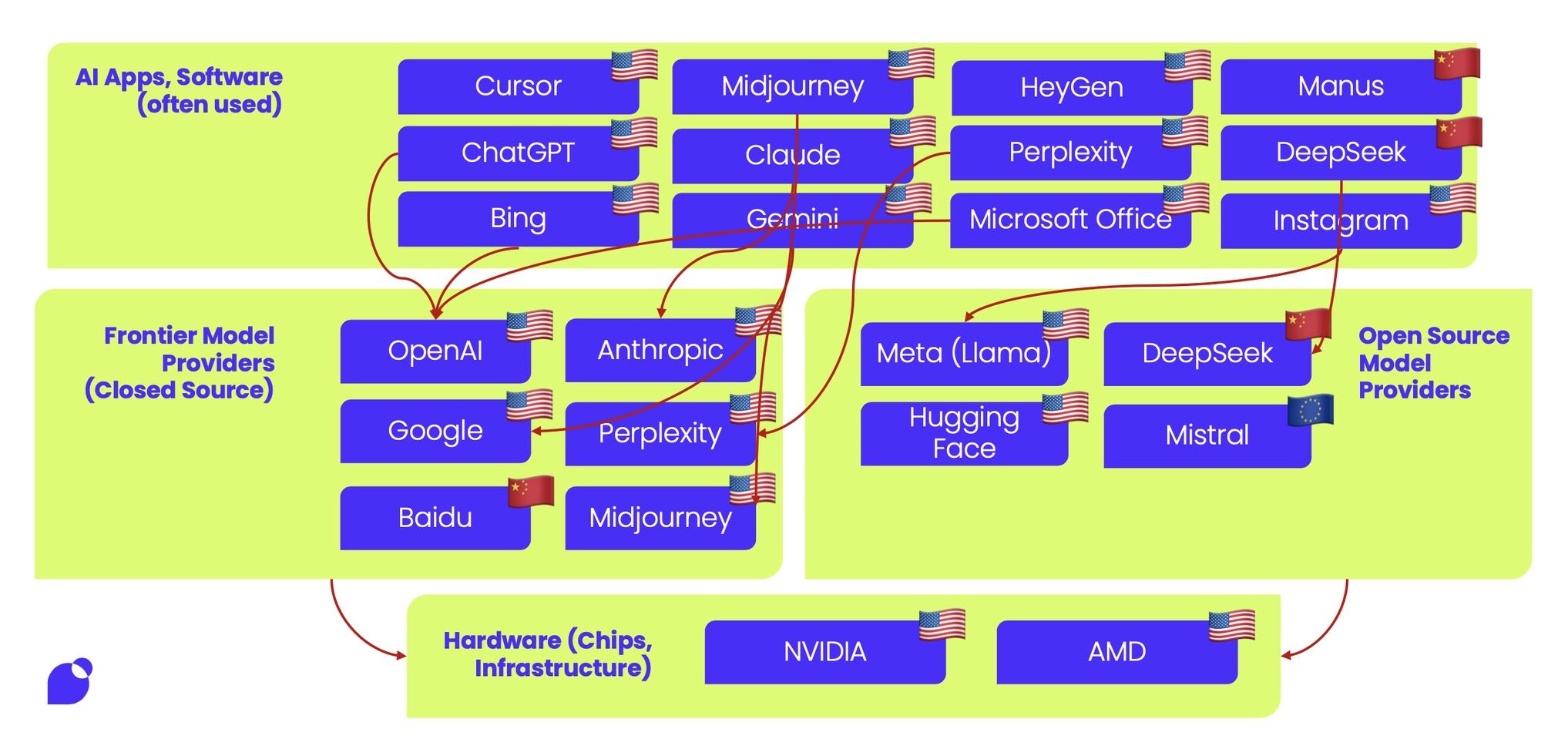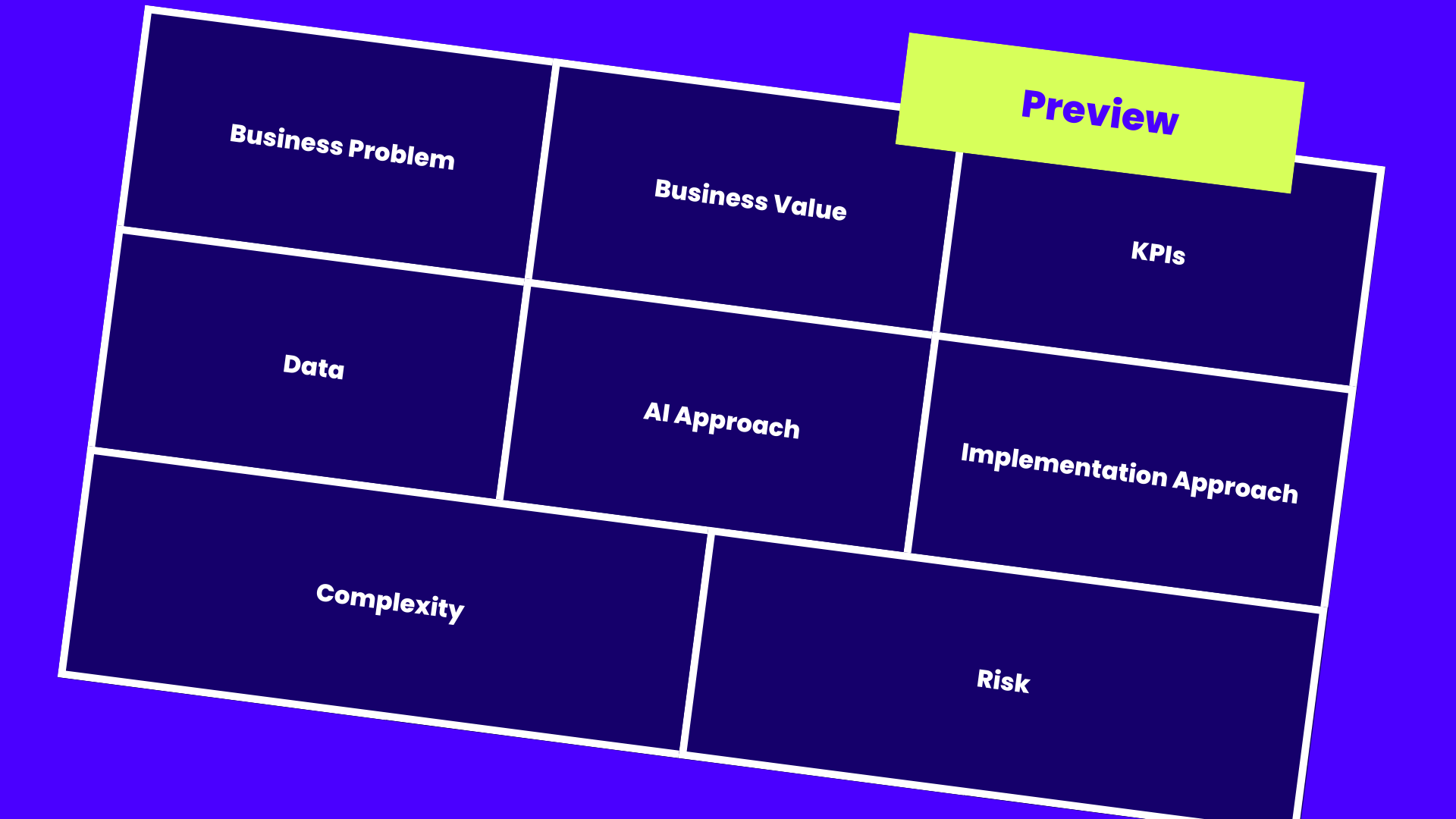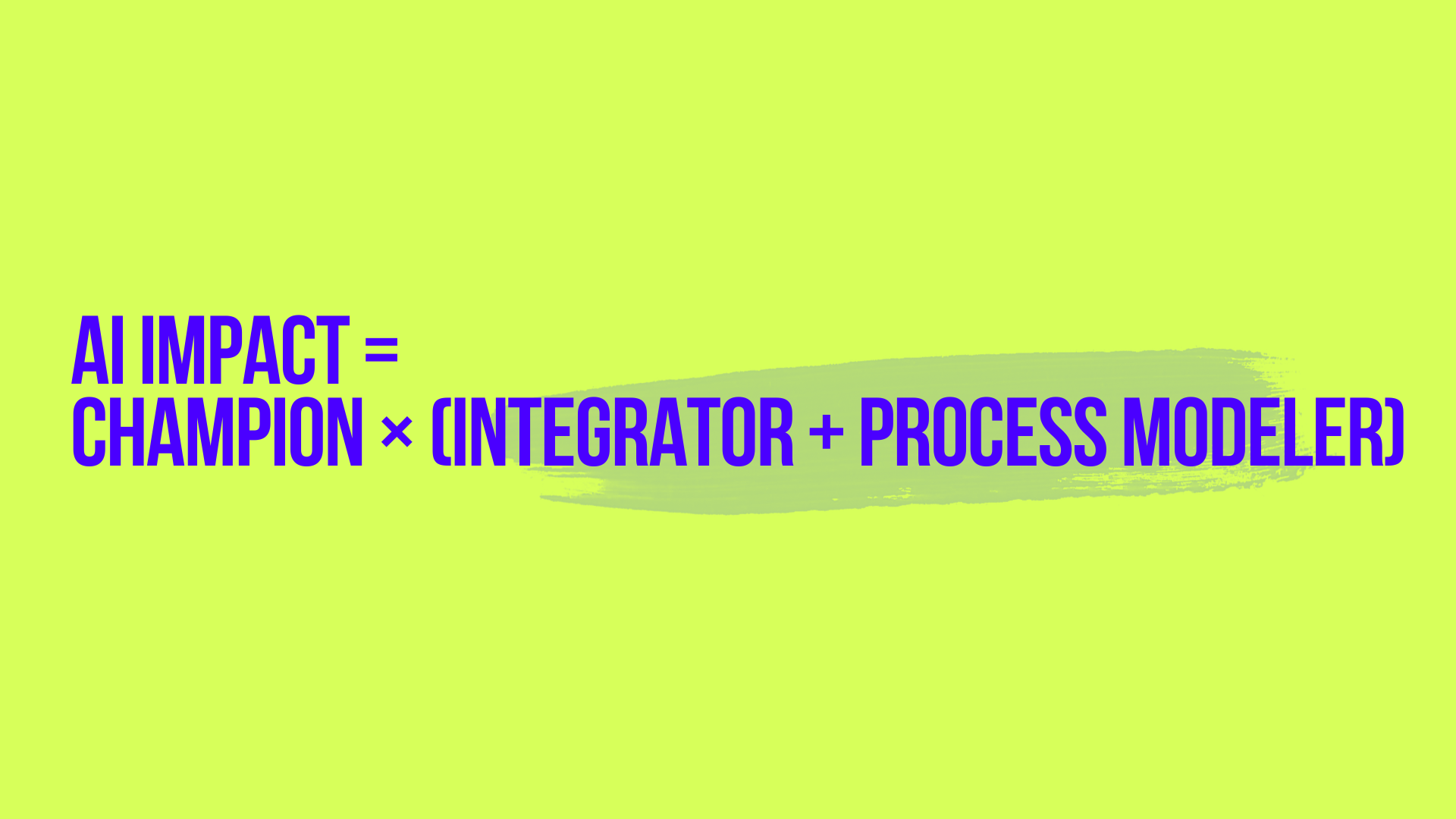What AI Project Should You Start With?
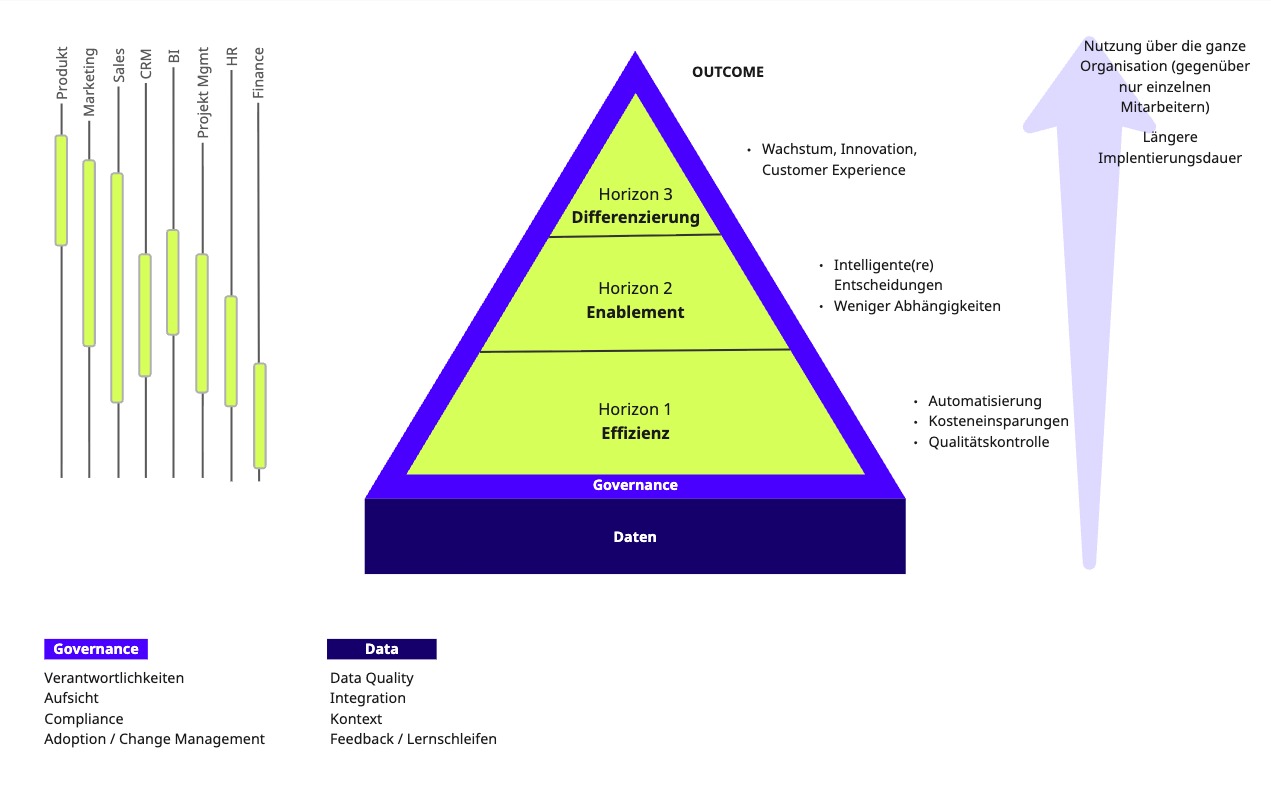
Most companies asking “what AI project should we start with?” make the same mistake: they choose projects based on hype, not readiness.
Here’s what that looks like in practice. I recently picked up an interesting anecdote at a trade show. A Swiss SMB developed a customer facing chat bot for support inquiries. The technology behind it was solid, and an internal pilot run showed that the bot can answer some common questions. The company was hoping to reduce the number of inbound messages for common question, but 4 months after deployment, that still wasn’t the case. It turns out, the bot wasn’t trained on actual responses from the customer support agents. There wasn’t any feedback loop from the operative support team to the team maintaining the chat bot. As a result, new topics never made it into the Knowledge base of the chat bot, and the customer support team kept having to answer many support requests manually.
Why did it fail?
- There wasn’t a central knowledge base for commonly asked questions
- Support agents were not trained to feed new topics into the data that the bot had access to
- The technology owner had no direct conversation with the operational support team
MIT research shows 95% of AI pilots fail, based on surveys they conducted. There are many failure points, but inadequate data, missing process workflows, and challenges in implementing change management were frequently mentioned by survey respondents.
Companies often chase one of two types of AI pilots: solutions with high external visibility, like customer-facing chatbots that generate buzz and media attention, or projects inareas where the promised ROI appears to more than offset the implementation costs. The common advice you hear from AI influencers is deceptively simple: “Use AI where it has the biggest impact.” This sounds clever and logical, and naturally points companies toward high-stakes areas like marketing, sales, or product development, where increased revenue can easily justify the investment.
The problem with this approach is that reality is messy. As intutive as it seems, these projects are much more likely to fail. At leasts until the organization is ready to implement them. Product, Marketing and Sales often rely on the most complicated underlying mechanisms, processes, technologies, and systems.
As a result, these pilots often hit major roadblocks when they encounter messy reality:
- teams that are not AI-literate
- missing data pipelines and data quelity processes
- different systems that do the same thing.
These are some of the reasons that teams tasked with implementation, who find themselves trying to build sophisticated AI solutions on shaky foundations, often deliver pilots that fail. Not because of technology, but because of the barriers to implementing complex projects.
The AI Horizons Framework
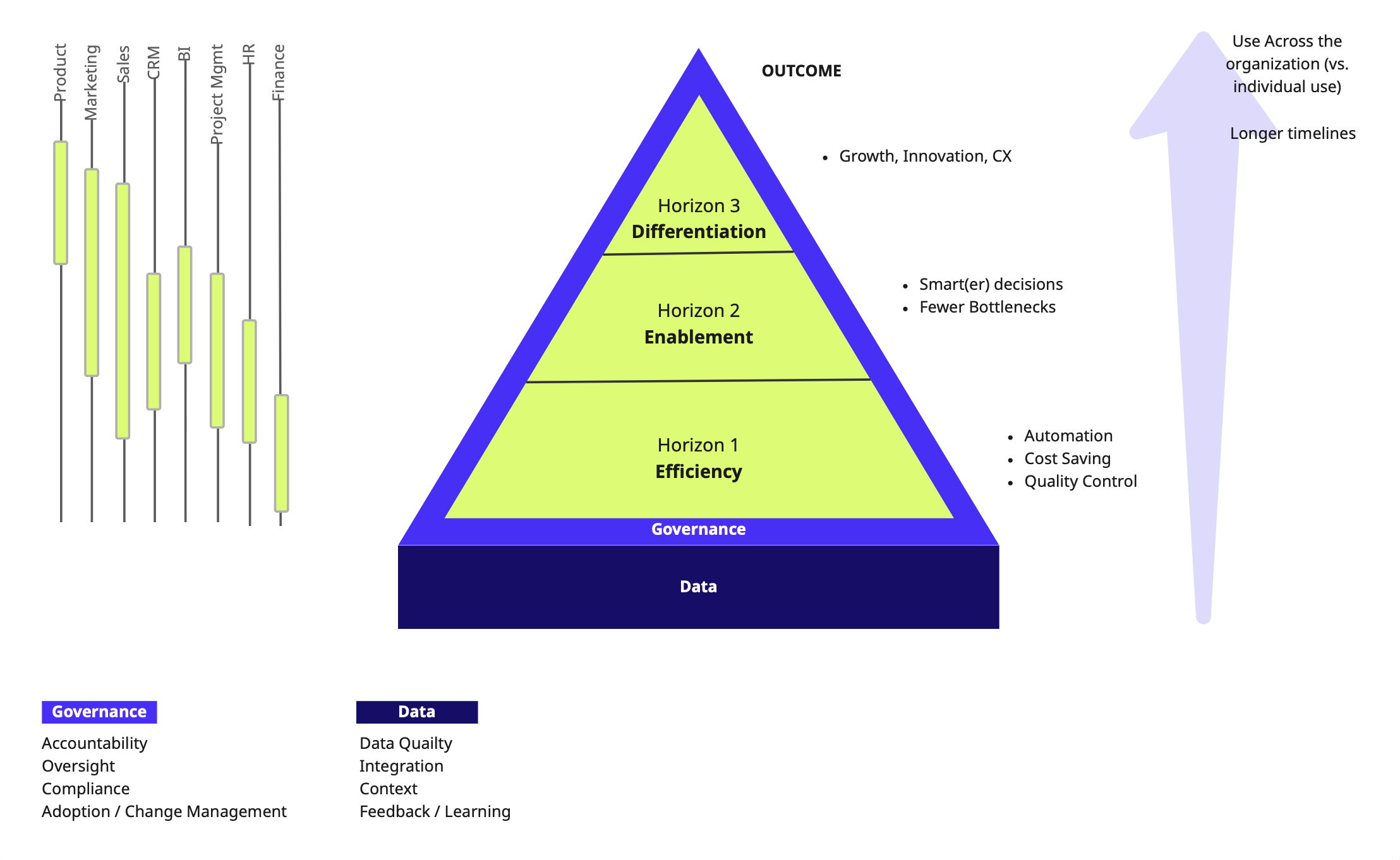 The AI Maturity Horizons Model: A proven path from efficiency to differentiation
The AI Maturity Horizons Model: A proven path from efficiency to differentiation
What I’ve seen work in reality is the following approach. Three horizons for AI projects where each horizon allows for progressively more complex implementation complexity:
- Efficiency: Projects that deliver operational efficiency and cost savings.
- Enablement: Solutions that enable smarter decisions and reduce bottlenecks between teams.
- Differentiation: High-ROI transformation projects for Growth and Innovation.
Each horizon builds the operational “muscles” you need for the next.
Horizon 1: Which AI Projects to Start With (Efficiency Focus)
Timeline: 60-90 days
Start with business AI automation projects that automate repetitive tasks, reduce operational costs, and improve quality control. These are typically contained within single departments or functions, have clear success metrics, and don’t require complex integrations across multiple systems. Think of processes where humans are currently doing manual, rule-based or repetitive work that can be standardized and automated.
Here are some concrete examples:
- Automations for invoice processing and matchoing
- AI that categorizes and triages support tickets to the right teams
- Compliance document review
- Standardized meeting summaries
These projects give your organization measurable, contained projects to complete within weeks, and they teach your team how AI actually works. More importantly, Horizon 1 projects give you the opportunity to establish the governance frameworks and operational practices you’ll need for more complex initiatives. This is when you should develop your criteria for evaluating AI project readiness, create documentation standards for how AI solutions are implemented, and establish communication protocols for explaining AI capabilities to internal teams. Use the AI Use Case Canvas to systematically evaluate each Horizon 1 opportunity.
Knowing when a project is ready for deployment, having clear implementation playbooks, and being able to articulate AI’s value to stakeholders, are elements that become critical for your organization as you move toward more sophisticated applications.
This is also the time to invest in the data infrastructure and system integrations that will enable Horizon 2 and 3 projects. While your efficiency projects might work with isolated data sources, future enablement and differentiation initiatives will require clean, connected data pipelines and robust system architectures. Use the momentum and credibility from your early wins to secure resources for these foundational investments.
Horizon 2: Enablement
Timeline: 3-6 months
This is when you move beyond single-department automation to AI solutions that facilitate cross-team collaboration and improve decision-making across organizational boundaries. These projects require you to dig deeper than simple process replacements. You’re identifying where projects stall because decisions aren’t being made, tracked, or communicated effectively between teams.
Here are some concrete examples:
- Knowledge management that tracks decisions and their outcomes, and surfaces contradictions in the course of a project
- Project tools that flag compliance risks
- Budget allocation support for marketing teams based on running campaigns and expected outcomes
- CRM systems that predict escalations from customer interactions
The key difference from Horizon 1 is that these solutions require you to establish centralized systems for tracking internal artifacts: Meeting notes, decision logs, project communications, and cross-functional handoffs. You’re not just automating existing processes, you’re creating visibility into the decision-making patterns that drive (or hinder) your business outcomes.
This is also where cross-functional collaboration becomes critical. Success depends on getting teams to adopt shared documentation standards, consistent meeting practices, and unified approaches to tracking decisions and their rationale. You’ll need to invest in change management and establish clear protocols for how different departments will interact with these AI-enabled systems.
Why you need Horizon 1 first: Your teams need to trust AI recommendations, and you need the data infrastructure and governance frameworks to support cross-departmental initiatives. Without the basics, these more complex projects will likely struggle with data quality issues and organizational resistance.
Implementation note: This is where the AI Impact Formula becomes critical. You need your Champion, an Integrator and a Process Modeler working together to navigate the cross-functional complexity that Horizon 2 projects require.
Horizon 3: Differentiation
Timeline: 6-12 months
This is where AI’s highest-level impact really lives. These are projects focused on growth, innovation, and customer experience transformation where the ROI can be substantial. You’re moving beyond efficiency and enablement to create competitive advantages that weren’t possible before AI.
Some examples:
- Product features that have knowledge of different facets of a customer: Their interactions, preferences, buying history, and usage goals
- Predictive lead scoring that combines behavioral data with market signals
- Automated customer support that feels natural, actual works and improves time-to-resolution without sacrificing customer satisfaction.
- Hyper-personalized email campaigns at scale.
The key difference is that these projects enable functionality or processes that were previously impossible with traditional tools. True growth, innovation, and customer experience improvements come from bringing together data and insights that were previously hidden across different systems and departments.
However, if not executed properly, these projects will deliver zero meaningful outcomes because they only scratch the surface of what’s possible. Success at this horizon requires looking at data from different systems, getting development teams to collaborate with operations, support, and compliance teams, and orchestrating complex integrations across your entire technology stack.
This is where well-run organizations can really differentiate themselves by introducing and using AI the right way. But it’s also why most companies fail here. They skip the foundational work from Horizons 1 and 2. You can’t personalize effectively when your data is messy, and you can’t automate sophisticated workflows that don’t exist or aren’t well-documented.
Why you need Horizons 1 and 2 first: These complex initiatives require the operational discipline, data infrastructure, and cross-functional collaboration patterns that you build through simpler projects. Without that foundation, differentiation projects become expensive experiments that rarely deliver their promised value.
Without this is how organizations get to 95% failure rate.
Consider From The Project Start: Data and Governance
As shown in the framework diagram, Data and Governance form the foundational base that supports all three horizons. These aren’t one-time builds—they evolve and strengthen as you progress through each level.
Data
What evolves across horizons:
- Horizon 1: Clean, accessible data from individual systems
- Horizon 2: Integrated data pipelines connecting multiple departments
- Horizon 3: Rich, contextual data that enables sophisticated personalization and prediction
Key elements:
- Data Quality: Focus on completeness and variability of data. AI can handle different formats quite well.
- Integration: APIs and connectors that allow systems to share information seamlessly or access them when required.
- Context: Metadata, business logic, and decision logs helps AI understand what the data means
- Feedback/Learning: Mechanisms to improve data quality based on AI performance.
Governance: Guard Rails for Responsible AI
What evolves across horizons:
- Horizon 1: Basic approval processes and success metrics
- Horizon 2: Cross-functional decision-making protocols and change management
- Horizon 3: Comprehensive AI ethics, compliance monitoring, and risk management
Key elements:
- Accountability: Clear ownership of AI decisions and outcomes
- Guardrails: Automated checks and human oversight points
- Change Management: Processes for training teams and managing organizational shifts
- Continuous Improvement: Regular assessment and refinement of AI implementations
How to Choose Your First AI Project: Step-by-Step Guide
The AI implementation roadmap is straightforward: Start with Horizon 1 today. Identify one manual process in your organization that wastes 5 or more hours per week and has clear success metrics. The goal is to get the wheels turning on AI projects. Look for something that affects multiple people but doesn’t require perfect data—expense approvals, ticket routing, contract review, or meeting notes summarization are all excellent starting points.
Most small to medium businesses can launch their first AI pilot project within 2 months.
Your organization’s AI maturity isn’t measured by how sophisticated your models are, but by how systematically you’ve approached implementation. The three-horizon framework gives you that systematic approach for selecting and executing the right first AI project for your business.
Start with Horizon 1. Build the discipline. Then scale with confidence.
Frequently Asked Questions
What AI project should I start with for my business?
Start with Horizon 1 efficiency projects like automated invoice processing, support ticket categorization, or meeting summaries. These have clear ROI and teach your team AI fundamentals.
How do I choose my first AI project?
Use our 3-step approach: 1) Identify repetitive manual tasks, 2) Ensure clear success metrics exist, 3) Start with single-department solutions before cross-functional ones.
What are the easiest AI projects to implement?
Horizon 1 projects like automated data entry, email categorization, basic chatbots for FAQ, and document processing typically show results in 60-90 days.
How much does it cost to start an AI project?
Horizon 1 efficiency projects typically cost $5,000-$25,000 and can be implemented with existing tools like Zapier, Microsoft Power Automate, or simple AI APIs.
How long does it take to see results from AI projects?
Most Horizon 1 projects show measurable results within 60-90 days. Horizon 2 projects take 3-6 months, while Horizon 3 differentiation projects require 6-12 months.
What are common AI project mistakes to avoid?
The biggest mistake is starting with complex Horizon 3 projects like personalized marketing before building data infrastructure and team capabilities through simpler Horizon 1 projects.
Do I need technical expertise to start AI projects?
Yes, but not the kind you think. Horizon 1 projects aren’t usually technically complicated, but getting them right is critical because they form the foundation for everything that follows. You need expertise in AI project planning, process design, and implementation frameworks to avoid the common pitfalls that lead to the 95% failure rate. Starting wrong means rebuilding later, which is far more expensive than getting expert guidance from the beginning.
Ready to Start Your First AI Project?
Not sure which AI project to start with? Here’s your action plan:
- Audit your processes: List manual tasks that take 5+ hours/week
- Use our framework: Apply the AI Use Case Canvas
- Start small: Pick one Horizon 1 project from our examples above
- Get the right team: Follow the AI Impact Formula
Most common first AI projects that succeed:
- Automated expense report processing
- Support ticket categorization
- Meeting notes summarization
- Invoice matching and approval
- Basic document review
The question isn’t whether AI will transform your business—it’s whether you’ll start with the right project to build lasting success.
Want Expert Guidance on Your AI Strategy?
Book a half-day AI strategy workshop where we’ll:
- Identify your 3 highest-impact opportunities
- Evaluate them using the AI Use Case Canvas
- Build an AI implementation roadmap
- Define the team structure and resources you need
- Create a clear go/no-go decision framework
Perfect for: Business owners and executives who want to avoid the 95% failure rate and start their AI journey with confidence.
Schedule Your AI Strategy Workshop or connect with me directly to discuss your specific needs.


